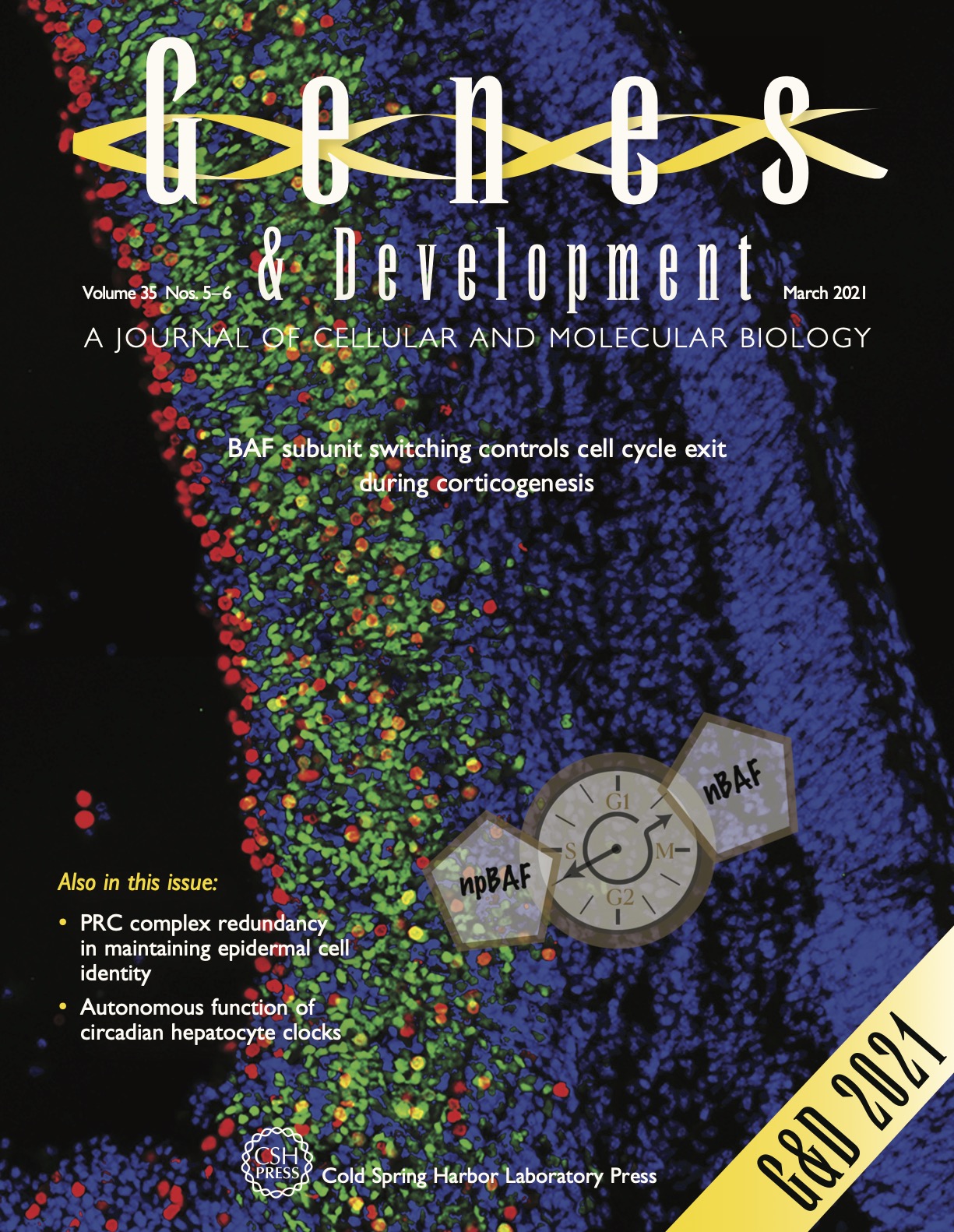G&D cover
Cover of the latest issue of Genes & Development

Our study on how BAF subunit switching controls cell cycle exit during corticogenesis is now published online.
mSWI/SNF or BAF chromatin regulatory complexes are dosage-sensitive regulators of human neural development frequently mutated in autism spectrum disorders and intellectual disability. Cell cycle exit and differentiation of neural stem/progenitor cells is accompanied by BAF subunit switching to generate neuron-specific nBAF complexes. We manipulated the timing of BAF subunit exchange in vivo and found that early loss of the npBAF subunit BAF53a stalls the cell cycle to disrupt neurogenesis. Loss of BAF53a results in decreased chromatin accessibility at specific neural transcription factor binding sites. This results in repression of cell cycle genes, thereby blocking cell cycle progression and differentiation. Cell cycle block upon Baf53a deletion could be rescued by premature expression of the nBAF subunit BAF53b but not by other major drivers of proliferation or differentiation. WNT, EGF, bFGF, SOX2, c-MYC, or PAX6 all fail to maintain proliferation in the absence of BAF53a, highlighting a novel mechanism underlying neural progenitor cell cycle exit in the continued presence of extrinsic proliferative cues.
This is a collaboration between the Crabtree lab (Stanford University) and the Panagiotakos lab (UCSF).
For an interesting preview of our findings, check out this article featured in UCSF News!
9 Mar 2021